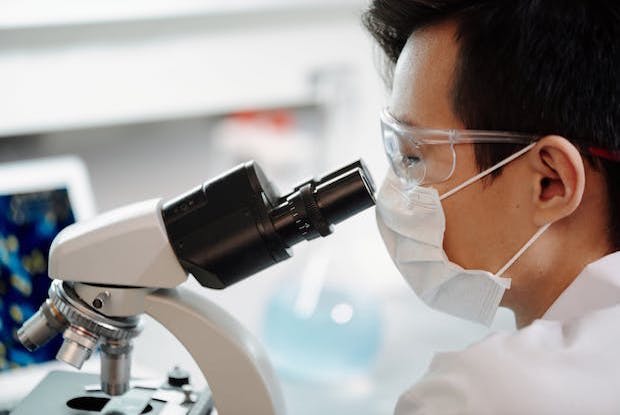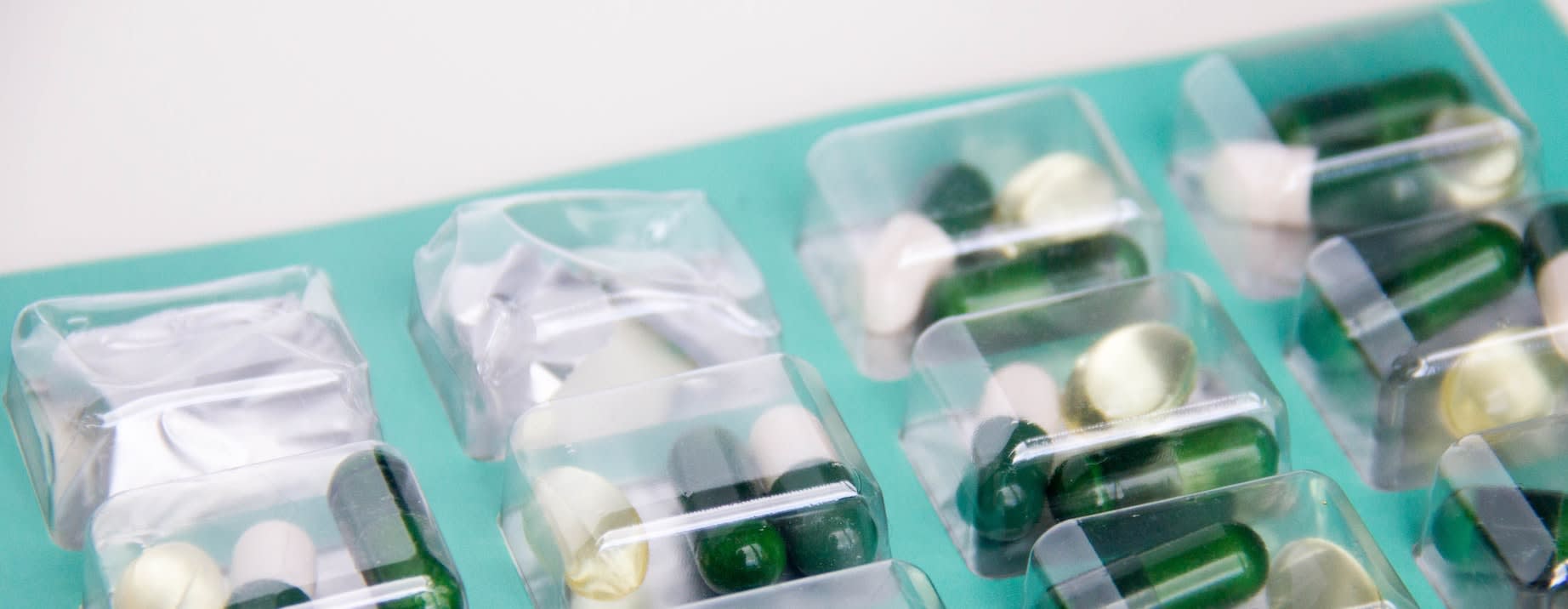Table of Contents
I. What are Penicillins Used for?
b. How does Penicillin Affect Peptidoglycans?
c. How do Other Antibiotics Work?
IV. Side Effects of Penicillins
What are Penicillins Used for?
When people talk about penicillins, they might be talking about the specific penicillin drug. However, more commonly, they will be talking about a whole family of drugs. The penicillin family of drugs is just one type of antibiotic medication. Penicillin antibiotics may also be called beta-lactam antibiotics. Common antibiotics from the penicillin family include amoxicillin (Amoxil) and penicillin V (Pen V).
Antibiotic drugs, including penicillins, are used to treat infections caused by bacteria. Antibiotics are ineffective when treating infections caused by other substances, including fungus, viruses, and parasites.
Different medications will be more effective than others when treating medical conditions. Penicillin antibiotics are often prescribed to treat conditions including pneumonia, meningitis, strep throat, and syphilis. [1] Depending on your infection, your doctor may perform a susceptibility test so that they can find out which type of penicillin will be the most effective in your treatment. [2]

How do Penicillins Work?
Penicillin antibiotics are bactericidal medications. This means that they kill bacteria rather than blocking them from functioning. Penicillins kill bacterial cells by indirectly destroying their cell walls.
a. What are Peptidoglycans?
An important component of bacteria cell walls is peptidoglycan. Bacteria can be separated into two distinct groups; gram-positive bacteria and gram-negative bacteria. Bacteria cells grow and divide rapidly. When the cells divide, small holes can appear. Peptidoglycans fill in these holes to create a framework surrounding the bacterial cell membrane. [3] In gram-positive bacteria, this layer of peptidoglycan is on the outside of the cell wall. For gram-negative bacteria, peptidoglycan is found between membranes. Peptidoglycans are not found in normal human cells, so penicillin does not affect other cells. [4]
b. How does Penicillin Affect Peptidoglycans?
Penicillin medications are usually prescribed to treat gram-positive bacteria. Penicillins work to destroy bacterial cells by blocking the proteins that link peptidoglycans. By interfering with these molecules, peptidoglycans are unable to plug the holes in the bacteria’s cell walls. Water from the surrounding fluid is then able to rush through these holes and burst the walls of the cells. [3] Once the cells have burst open, the cells can be then be broken down by the body’s immune system.

c. How do Other Antibiotics Work?
Antibiotics can be either bactericidal or bacteriostatic. As mentioned, penicillin is a bactericidal antibiotic that destroys bacteria cells. Other bactericidal antibiotics may kill cells in other ways, such as interfering with the contents of a cell. [5]
Other antibiotics are bacteriostatic. These antibiotics do not kill bacteria cells but prevent them from growing and dividing. Bacteriostatic drugs may prevent bacteria cells from continuing to produce proteins. While the cells will still survive, they will no longer be able to replicate. This then allows the body’s immune system to control the infection. [6]
History of Penicillin
Penicillin drugs have saved millions of lives since they were first discovered. [3] Alexander Fleming is credited with discovering penicillin in 1928. When cleaning his lab, he noticed some Petri dishes containing bacteria had grown mold. Fleming realized that this mold was preventing the bacteria from growing as normal. [1]
Scientific discovery and research were not as quick as these days and it was not until the early 1940s that penicillin was tested on humans. By 1942, the drug was being used successfully to treat infections. In previous wars, infections had resulted in more deaths than the injuries themselves. However, during World War II, the discovery of penicillin drastically lowered the death rate from pneumonia and other infections. [1] Penicillin was soon called a ‘miracle drug’ and in 1945, Fleming and his peers were awarded the Nobel Prize in Physiology or Medicine. [7]
Since then, dozens of other antibiotics have become available. These days, over 150 million prescriptions are written for antibiotics in the United States each year. [8]
Side Effects of Penicillins
All medications are produced to treat and prevent medical conditions. As they are usually manufactured for a specific purpose, most medications also cause side effects. Doctors will weigh the benefits and risks of each medication before prescribing it.

A person’s age, general health, organ function, and alcohol intake will affect the severity, frequency, and range of side effects. When taking antibiotics, many common side effects affect the digestive system. [9] These are the common side effects of antibiotics, including penicillins:
- Nausea or vomiting
- Headaches
- Indigestion or bloating
- Stomach or abdominal pain
- Diarrhea
- Loss of appetite
- Vaginal itching or discharge
- A swollen, black or ‘hairy tongue’.
Penicillins may also cause more serious side effects. You should seek immediate medical assistance if you notice any of the following symptoms:
- Watery or bloody diarrhea
- Seizures
- Unusual thoughts or behavior including agitation and confusion
- Less frequent urination
- Easier bruising or bleeding
- Severe skin rashes, itching or peeling
- Flu symptoms including fever, chills, or body aches
- Signs of an allergic reaction including difficulty breathing, hives, or facial or tongue swelling [10]
The content in this article is intended for informational purposes only. This website does not provide medical advice. In all circumstances, you should always seek the advice of your physician and/or other qualified health professionals(s) for drug, medical condition, or treatment advice. The content provided on this website is not a substitute for professional medical advice, diagnosis or treatment.
